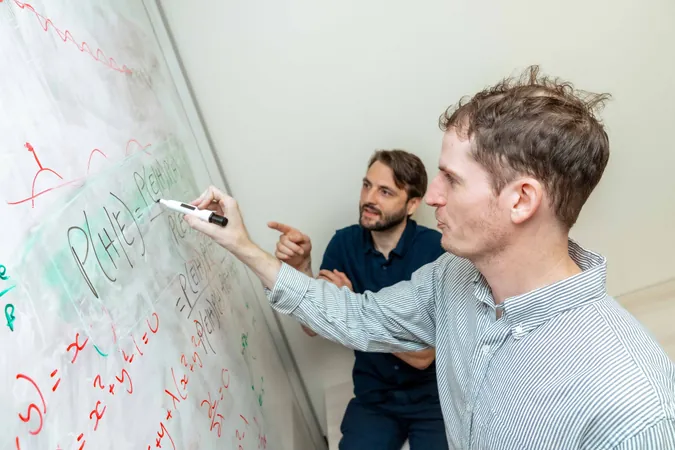
Breakthrough Discovery: How Brain Chemistry Distinguishes Parkinson's from Essential Tremor!
2025-09-02
Author: Siti
Revealing the Brain's Secrets!
In an exciting new study published in *Nature Communications*, researchers have unveiled a neurochemical signature that clearly differentiates Parkinson's disease from essential tremor, two prevalent movement disorders that impact millions worldwide.
The Science Behind the Findings
Scientists from the Fralin Biomedical Research Institute at VTC and the Virginia Tech College of Science honed in on the unique chemical signaling patterns of the neurotransmitters dopamine and serotonin. This breakthrough could transform how we understand and diagnose these conditions.
Co-senior author Read Montague, a renowned scientist at the Institute, emphasized the groundbreaking nature of their work, which draws on over 15 years of research. "We've developed medical testing methods and machine learning models that allow us to observe brain chemistry in unprecedented detail," he noted.
Exploring the Brain's Decision-Making Zone
The focus of the study was on the caudate nucleus, a brain region critical for decision-making and reward processing. Innovative machine learning techniques were employed during deep brain stimulation surgeries on patients, allowing researchers to monitor fast-changing brain chemistry as subjects engaged in a decision-making game.
From Serotonin to Dopamine: A Surprising Twist
Against the expected backdrop of dopamine decline in Parkinson's patients, researchers were stunned to find that the clearest distinction between the two disorders lay not just in dopamine levels, but in serotonin activity. While patients with essential tremor exhibited a characteristic rise and fall in these neurotransmitters, this dynamic was notably absent in those suffering from Parkinson's.
"This absence of reciprocal signaling was the most astonishing discovery," said co-senior author William "Matt" Howe. "It indicates a deeper disruption in the brain's chemistry than previously understood."
Implications for Diagnosis and Treatment
With Parkinson's affecting around 10 million people globally, and essential tremor impacting even more, these findings are not just academic. They have significant implications for clinical diagnostics and therapies. This research highlights how closely our cognitive processes—like social evaluations—are intertwined with neurochemical signals.
As Dan Bang, an associate professor involved in the study, states, "Linking these moment-to-moment changes in beliefs to measurable brain chemistry is revolutionary. It opens new paths for understanding cognitive functions affected by diseases."
A Collaborative Triumph
This groundbreaking work is a testament to years of refinement and interdisciplinary collaboration. The integration of innovative models and diverse expertise led to the revelation of these critical patterns in brain chemistry. Montague concludes, "While this study tells an incredible story, it's just the beginning of a much larger narrative in neuroscience."
Looking Ahead: The Future of Neurological Research
With these insights, scientists are gearing up for further research that could pave the way for new therapeutic strategies, enhancing the lives of millions suffering from these movement disorders. The journey to unraveling the complexities of brain chemistry continues, and the potential breakthroughs ahead are nothing short of thrilling!





 Brasil (PT)
Brasil (PT)
 Canada (EN)
Canada (EN)
 Chile (ES)
Chile (ES)
 Česko (CS)
Česko (CS)
 대한민국 (KO)
대한민국 (KO)
 España (ES)
España (ES)
 France (FR)
France (FR)
 Hong Kong (EN)
Hong Kong (EN)
 Italia (IT)
Italia (IT)
 日本 (JA)
日本 (JA)
 Magyarország (HU)
Magyarország (HU)
 Norge (NO)
Norge (NO)
 Polska (PL)
Polska (PL)
 Schweiz (DE)
Schweiz (DE)
 Singapore (EN)
Singapore (EN)
 Sverige (SV)
Sverige (SV)
 Suomi (FI)
Suomi (FI)
 Türkiye (TR)
Türkiye (TR)
 الإمارات العربية المتحدة (AR)
الإمارات العربية المتحدة (AR)